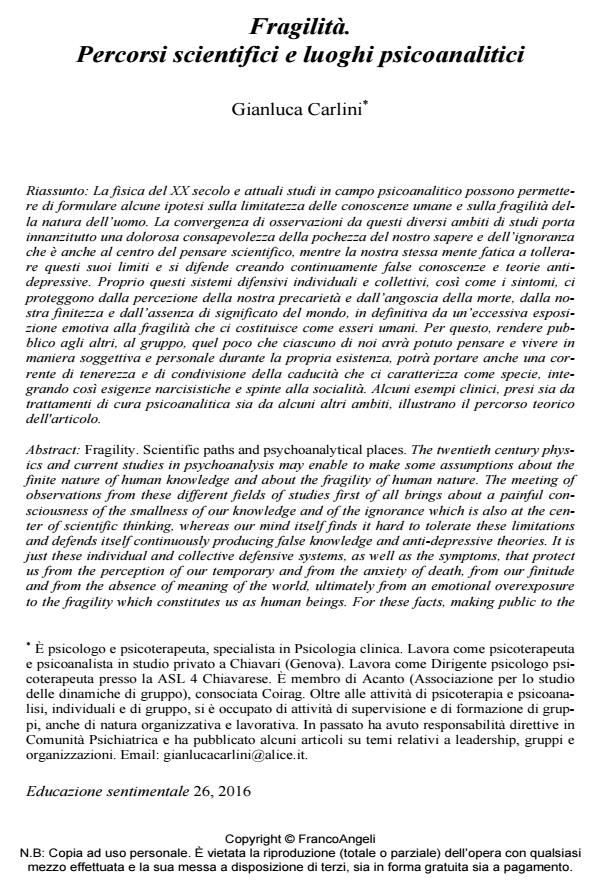Fragilità. Percorsi scientifici e luoghi psicoanalitici
Journal title EDUCAZIONE SENTIMENTALE
Author/s Gianluca Carlini
Publishing Year 2016 Issue 2016/26
Language Italian Pages 18 P. 115-132 File size 223 KB
DOI 10.3280/EDS2016-026006
DOI is like a bar code for intellectual property: to have more infomation
click here
Below, you can see the article first page
If you want to buy this article in PDF format, you can do it, following the instructions to buy download credits

FrancoAngeli is member of Publishers International Linking Association, Inc (PILA), a not-for-profit association which run the CrossRef service enabling links to and from online scholarly content.
Fragility. Scientific paths and psychoanalytical places. The twentieth century physics and current studies in psychoanalysis may enable to make some assumptions about the finite nature of human knowledge and about the fragility of human nature. The meeting of observations from these different fields of studies first of all brings about a painful consciousness of the smallness of our knowledge and of the ignorance which is also at the center of scientific thinking, whereas our mind itself finds it hard to tolerate these limitations and defends itself continuously producing false knowledge and anti-depressive theories. It is just these individual and collective defensive systems, as well as the symptoms, that protect us from the perception of our temporary and from the anxiety of death, from our finitude and from the absence of meaning of the world, ultimately from an emotional overexposure to the fragility which constitutes us as human beings. For these facts, making public to the others, to the group, the little that each of us will have thought and lived in a subjective and personal way during his life, will also bring a current of tenderness and of sharing the caducity which characterizes us as a species, thus integrating narcissistic needs and pressures to sociality. Some clinical examples, taken from both psychoanalytic cure treatments and some different settings, illustrate the theoretical path of this article.
Keywords: Physics, psychoanalysis, limits of knowledge, fragility of human nature, sublimation, sharing, making public.
Gianluca Carlini, Fragilità. Percorsi scientifici e luoghi psicoanalitici in "EDUCAZIONE SENTIMENTALE" 26/2016, pp 115-132, DOI: 10.3280/EDS2016-026006